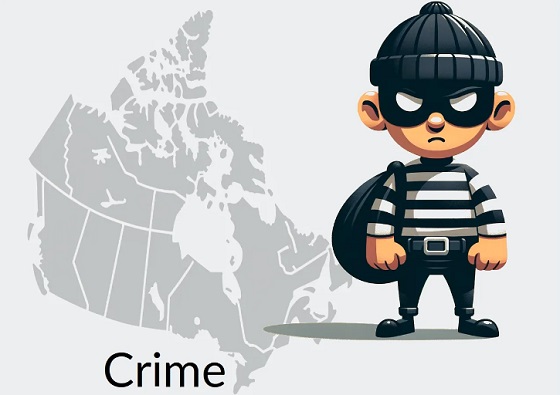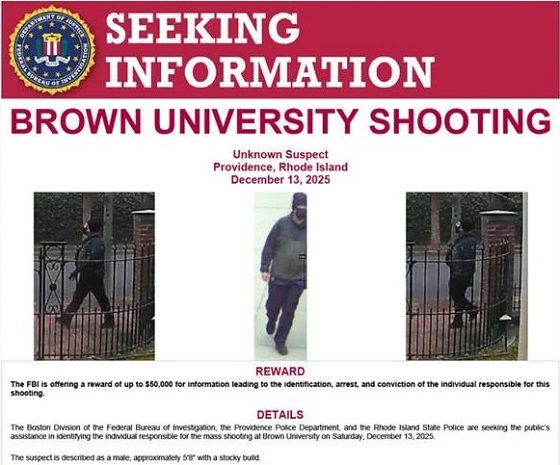Crime
Has Canada’s Criminal Code Lost Its Way?

From The Audit
I am neither a lawyer nor the son of a lawyer and, thankfully, I’ve never been dragged through the justice system as a participant. But that doesn’t mean I can’t have thoughts.
My recent post on auto theft conviction rates ended with a suggestion that the size and complexity of Canada’s Criminal Code might be contributing to systemic problems with our courts – including suffocating inefficiencies. I’d like to explore that idea a bit more here.
First of all though, complexity is not the driver of most criminal behavior. You don’t need a law degree to know that you shouldn’t steal someone’s car or break his nose in a barroom brawl. And anyone with a grade three education should realize that government program fraud isn’t exactly saintly behaviour.
But overly complex laws can be responsible for some serious problems. Consider how clarity is actually a cornerstone of justice. In Canada, for instance, the Void for Vagueness Doctrine holds that a law is invalid if it’s too vague for the average person to understand. That’s because such laws fail to provide “fair notice” of what’s prohibited and clear standards for enforcement.
Similarly, if accused criminals can demonstrate that the complexity or ambiguity of the statute led them to reasonably believe their conduct was lawful, those laws might fail the necessary mens rea requirement for certain offences.
Unfortunate illustrations of this problem make appearances in some recent Liberal government legislation:
- Online Harms Act (Bill C-63) fails to provide a clear definition for “online harm”. This makes it impossible for citizens to anticipate how the new Digital Safety Commission will enforce the law.
- Online Streaming Act (Bill C-11) appears to require streaming services (like YouTube) to regulate user-generated content using an undefined standard.
- Online News Act (Bill C-18) could affect how news is shared and accessed online, potentially influencing the availability and distribution of Canadian news.
Of those, at least C-63 and C-11 – in their current form – could expose individuals to significant criminal and civil penalties without providing clarifying details.
Here’s another example. Section 423 of the Criminal Code prohibits intimidation:
423(1) Every one is guilty of an indictable offence and liable to imprisonment for a term of not more than five years or is guilty of an offence punishable on summary conviction who, wrongfully and without lawful authority, for the purpose of compelling another person to abstain from doing anything that he or she has a lawful right to do, or to do anything that he or she has a lawful right to abstain from doing…blocks or obstructs a highway.
And Section 430 prohibits “mischief”, whose definition includes:
interfering with the lawful use, enjoyment, or operation of property.
Just playfully attaching a sticker to someone’s car could lead to charges even if there was no intent to cause harm (by, say, damaging the car’s paint).
The problem here is that both Sections 423 and 430 are, to put it mildly, inconsistently enforced. This is something I’ve already discussed in my Limits of Legal Protest post. Participants in recent pro-Hamas protests flagrantly blocked lawful access to roads, parks, and public buildings for weeks at a time in cities across the country. That’s a clear Section 423 and 430 violation. And yet, of the many hundreds of participants, only a handful were ever arrested and, to my knowledge, none was charged with mischief or intimidation.
Now I know exactly what you’re thinking: “Come on Clinton, what about 430(7)?”
No person commits mischief within the meaning of this section by reason only that he attends at or near or approaches a dwelling-house or place for the purpose only of obtaining or communicating information.
Weren’t those protesters just there to communicate information (“from the river to the sea…”)? Well I’m actually not sure how much meaningful communication was happening at those gatherings. Dialog didn’t seem to be their primary focus. But the legal issue wasn’t where they chose to stand, it was the fact that they actively and intentionally prevented the lawful use, enjoyment, or operation of property – both private and public.
Now, in that context, is it reasonable to prosecute any acts of mischief or intimidation anywhere in Canada? Couldn’t a person reasonably argue that he was under the informed opinion that Canadian police largely ignored such offences?
As the Criminal Code grows, its internal complexity is bound to increase along with it. Comparing the PDF version of the June 15, 2011 version of the Code (1,025 pages) to the most recent version (1,349 pages) gives us a sense of the changes that are happening in both government and society as a whole. More than 226,000 words (in both French and English) were added over that time, a 31 percent increase. Revisions included updates concerning firearms and weapons, remote proceedings, indigenous rights, organized crime and terrorism, and palliative care.
All that’s not necessarily a bad thing. But when poorly-written legislation (like C-11) makes it into the books and perfectly fine legislation (like Section 430) is enforced unevenly, then we’re asking for trouble. A competent government should be able to do better than that.
Crime
Brown University shooter dead of apparent self-inflicted gunshot wound

From The Center Square
By
Rhode Island officials said the suspected gunman in the Brown University mass shooting has been found dead of an apparent self-inflicted gunshot wound, more than 50 miles away in a storage facility in southern New Hampshire.
The shooter was identified as Claudio Manuel Neves-Valente, a 48-year-old Brown student and Portuguese national. Neves-Valente was found dead with a satchel containing two firearms inside in the storage facility, authorities said.
“He took his own life tonight,” Providence police chief Oscar Perez said at a press conference, noting that local, state and federal law officials spent days poring over video evidence, license plate data and hundreds of investigative tips in pursuit of the suspect.
Perez credited cooperation between federal state and local law enforcement officials, as well as the Providence community, which he said provided the video evidence needed to help authorities crack the case.
“The community stepped up,” he said. “It was all about groundwork, public assistance, interviews with individuals, and good old fashioned policing.”
Rhode Island Attorney General Peter Neronha said the “person of interest” identified by private videos contacted authorities on Wednesday and provided information that led to his whereabouts.
“He blew the case right open, blew it open,” Neronha said. “That person led us to the car, which led us to the name, which led us to the photograph of that individual.”
“And that’s how these cases sometimes go,” he said. “You can feel like you’re not making a lot of progress. You can feel like you’re chasing leaves and they don’t work out. But the team keeps going.”
The discovery of the suspect’s body caps an intense six-day manhunt spanning several New England states, which put communities from Providence to southern New Hampshire on edge.
“We got him,” FBI special agent in charge for Boston Ted Docks said at Thursday night’s briefing. “Even though the suspect was found dead tonight our work is not done. There are many questions that need to be answered.”
He said the FBI deployed around 500 agents to assist local authorities in the investigation, in addition to offering a $50,000 reward. He says that officials are still looking into the suspect’s motive.
Two students were killed and nine others were injured in the Brown University shooting Saturday, which happened when an undetected gunman entered the Barus and Holley building on campus, where students were taking exams before the holiday break. Providence authorities briefly detained a person in the shooting earlier in the week, but then released them.
Investigators said they are also examining the possibility that the Brown case is connected to the killing of a Massachusetts Institute of Technology professor in his hometown.
An unidentified gunman shot MIT professor Nuno Loureiro multiple times inside his home in Brookline, about 50 miles north of Providence, according to authorities. He died at a local hospital on Tuesday.
Leah Foley, U.S. attorney for Massachusetts, was expected to hold a news briefing late Thursday night to discuss the connection with the MIT shooting.
Crime
Bondi Beach Survivor Says Cops Prevented Her From Fighting Back Against Terrorists


From the Daily Caller News Foundation
A woman who survived the Hanukkah terrorist attack at Bondi Beach in Australia said on Monday that police officers seemed less concerned about stopping the attack than they were about keeping her from fighting back.
A father and son of Pakistani descent opened fire on a Hanukkah celebration Sunday, killing at least 15 people and wounding 40, with one being slain on the scene by police and the other wounded and taken into custody. Vanessa Miller told Erin Molan about being separated from her three-year-old daughter during Monday’s episode of the “Erin Molan Show.”
“I tried to grab one of their guns,” Miller said. “Another one grabbed me and said ‘no.’ These men, these police officers, they know who I am. I hope they are hearing this. You are weak. You could have saved so many more people’s lives. They were just standing there, listening and watching this all happen, holding me back.”
Dear Readers:
As a nonprofit, we are dependent on the generosity of our readers.
Please consider making a small donation of any amount here.
Thank you!
WATCH:
“Two police officers,” Miller continued. “Where were the others? Not there. Nobody was there.”
New South Wales Minister of Police Yasmin Catley did not immediately respond to a request for comment from the Daily Caller News Foundation about Miller’s comments.
Australian Prime Minister Anthony Albanese vowed to enact further restrictions on guns in response to the attack at Bondi Beach, according to the Associated Press. The new restrictions would include a limit on how many firearms a person could own, more review of gun licenses, limiting the licenses to Australian citizens and “additional use of criminal intelligence” to determine if a license to own a firearm should be granted.
Sajid Akram, 50, and Naveed Akram, 24, reportedly went to the Philippines, where they received training prior to carrying out the Sunday attack, according to the Australian Broadcasting Corporation. Naveed Akram’s vehicle reportedly had homemade ISIS flags inside it.
Australia passed legislation that required owners of semi-automatic firearms and certain pump-action firearms to surrender them in a mandatory “buyback” following a 1996 mass shooting in Port Arthur, Tasmania, that killed 35 people and wounded 23 others. Despite the legislation, one of the gunmen who carried out the attack appeared to use a pump-action shotgun with an extended magazine.
-

 Alberta1 day ago
Alberta1 day agoThe Canadian Energy Centre’s biggest stories of 2025
-

 Business1 day ago
Business1 day agoResurfaced Video Shows How Somali Scammers Used Day Care Centers To Scam State
-

 Bruce Dowbiggin2 days ago
Bruce Dowbiggin2 days agoIn Contentious Canada Reality Is Still Six Degrees Of Hockey
-

 Business14 hours ago
Business14 hours agoDark clouds loom over Canada’s economy in 2026
-

 Business2 days ago
Business2 days agoDOOR TO DOOR: Feds descend on Minneapolis day cares tied to massive fraud
-

 Addictions10 hours ago
Addictions10 hours agoCoffee, Nicotine, and the Politics of Acceptable Addiction
-

 Business2 days ago
Business2 days agoCanada needs serious tax cuts in 2026
-

 Business1 day ago
Business1 day agoOttawa Is Still Dodging The China Interference Threat










